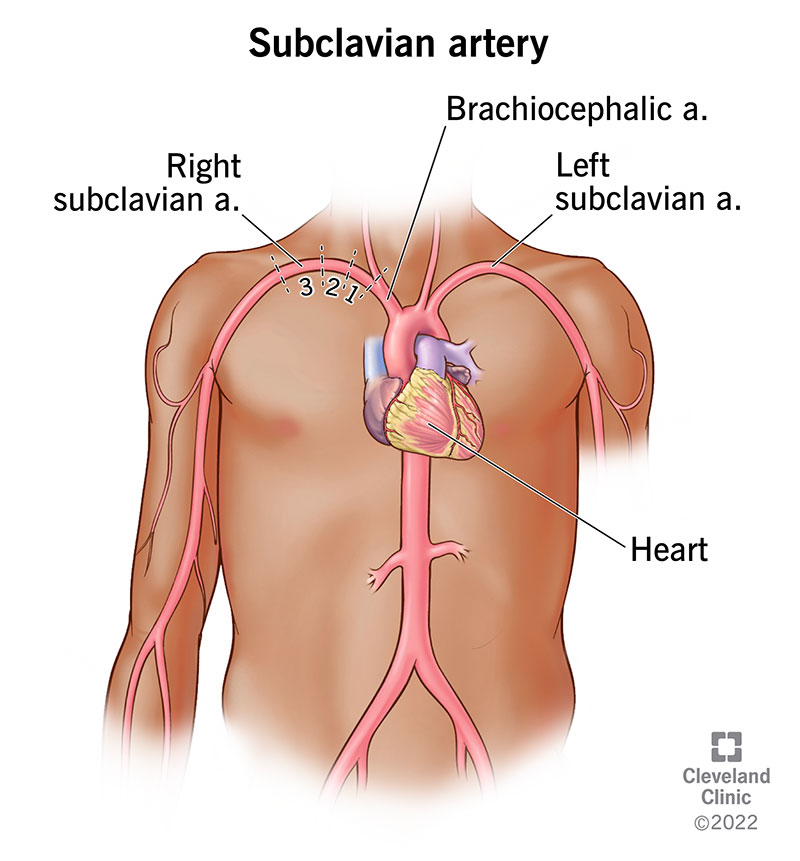Your subclavian arteries are responsible for getting blood to your upper body: your head, neck and arms. You have two subclavian arteries — one on the left side of your chest and one on the right side of your chest. Problems can happen when a subclavian artery becomes narrow or has a blockage that slows down blood flow. Medicines and surgeries can restore blood flow.
Advertisement
Cleveland Clinic is a non-profit academic medical center. Advertising on our site helps support our mission. We do not endorse non-Cleveland Clinic products or services. Policy

Your subclavian arteries move oxygen-rich blood from your heart to your upper body. Your left and right subclavian arteries, located below each of your collarbones, are major suppliers of blood to your neck, head and arms.
Advertisement
Cleveland Clinic is a non-profit academic medical center. Advertising on our site helps support our mission. We do not endorse non-Cleveland Clinic products or services. Policy
Your subclavian arteries get oxygenated blood from your heart to your head, neck and arms.
Both subclavian arteries are below your clavicles (collarbones), but your left and right subclavian arteries start in different places.
Your right subclavian artery starts at your brachiocephalic artery.
Your left subclavian artery starts at your aortic arch.
Both subclavian arteries travel away from the middle of your body, between your anterior and middle scalene muscles. They extend to your first rib, where they become axillary arteries.
Your subclavian arteries branch off into your left and right:
Advertisement
Your subclavian artery is about .7 centimeters to 1.0 cm (less than half an inch) in diameter.
Like other blood vessels, your subclavian artery has three layers. Thin, flexible layers of cells make up the inside and outside layers. They surround a middle layer of muscle.
Several diseases can affect your subclavian artery, including:
Symptoms vary depending on the disease affecting your subclavian artery. Symptoms include:
Your healthcare provider may do these tests:
Healthcare providers use treatments to open up your subclavian artery when it’s narrow or has a blockage. Treatments include:
You can care for your subclavian artery like you would for the rest of your cardiovascular system.
Advertisement
Your subclavian arteries play an important part in making sure your upper body has the blood supply it needs. Eating healthy foods and exercising will help your subclavian arteries stay strong, along with all of your other blood vessels. Regular checkups with your healthcare provider can alert them to any issues that may develop with your circulatory system. If you find yourself with a narrowing artery, treatments are available.
Advertisement
Cleveland Clinic’s primary care providers offer lifelong medical care. From sinus infections and high blood pressure to preventive screening, we’re here for you.

Last reviewed on 08/03/2022.
Learn more about the Health Library and our editorial process.